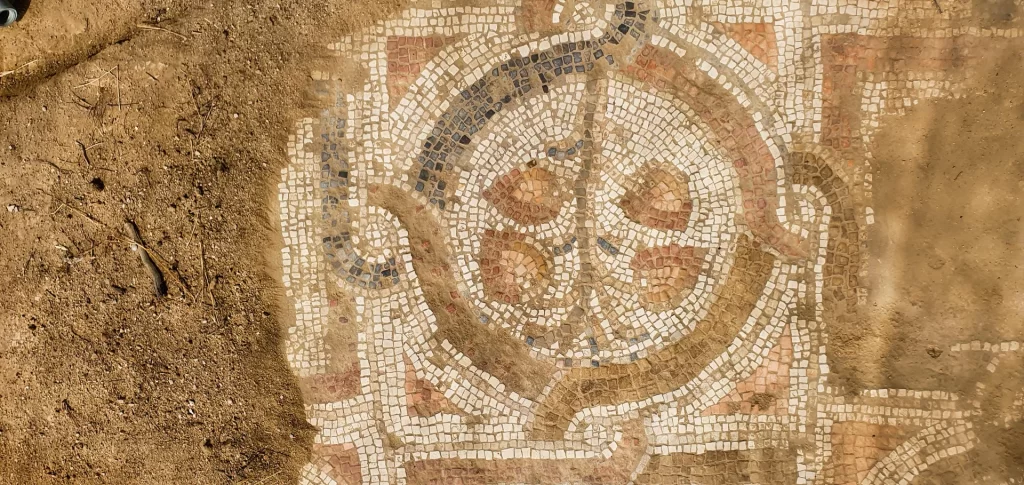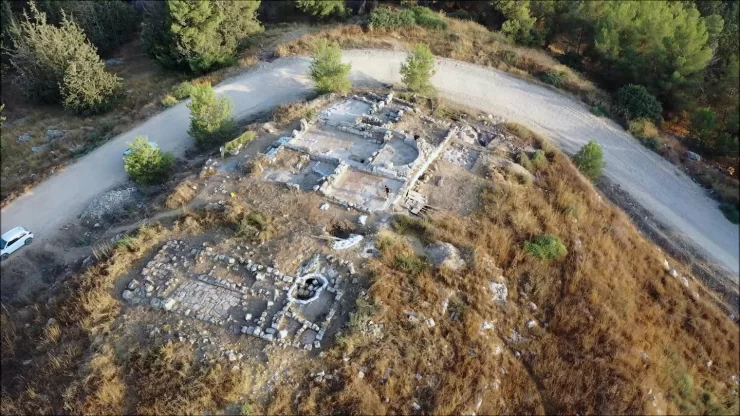The unexpectedly resurrected antiquity in question is Horbat Hani, a Byzantine nunnery in central Israel that dates back around 1,500 years.
Issy Kornfeld, the IAA’s head of the excavation, claims that pieces of its ruins were initially found in 2002 while the army was constructing a road there for its own use. Following an immediate salvage dig, the archaeologists found an early Christian religious building, but it wasn’t a typical church or monastery. That this was both a church and a convent.
But it is not the only early Christian structure in Israel that caters to women. Archaeologists discovered a wonderful Byzantine basilica in Ashdod by the sea in 2021, and they discovered that it had female ministers.
according to the news of Haaretz, among the original discovery at Horbat Hani (aka Horvat Hani) were dedicatory inscriptions to an abbess; a tower; structures that appear to have been the nuns’ version of hermit cells; traces of economic activity – wine and olive oil manufacture; and a subterranean burial complex. However, it appears that this is only for women and children. No men.
The majority of evidence led archaeologists to assume that it was a nunnery and that the local name of Buri el Hanaya reflected the biblical Hannah. She was one of Elkanah’s two wives, the other being the prolific Peninnah. Hannah, distraught over her infertility and apparently harassed severely by Peninnah – “And her rival afflicted her bitterly, to make her fret, because the Lord had locked up her womb” (1 Samuel 1:6) – prays and pledges that if she has a son, she will commit him to the service of God and never cut his hair.
And she did have a son, who would be Samuel: “And when she had weaned him, she took him up with her, with three bullocks, and one ephah of meal, and a bottle of wine, and brought him unto the house of the Lord in Shilo” (1 Samuel 1:24).
According to IAA archaeologist Dr. Eitan Klein, Hannah had been interred in this twice-revealed nunnery, and the name of the nearby Arab hamlet serves to perpetuate her memory.
“During the initial excavation, two structures were found: one was a church that had a brilliant mosaic floor decorated with images of flora and fauna, as well as an entrance hall, dormitories for the nuns, hermit cells, a tower with chambers, a crypt, and an underground burial complex. The other structure housed a kitchen, a refectory (dining room), and a pilgrim inn” according to Kornfeld.



The site was then covered with earth to preserve it, as is done with ancient sites that are not maintained and developed for public viewing; and the army continued to drill. And, it appears, the place was mostly ignored, at least by the military. The IAA did not forget and would inspect the site on a regular basis.
And, as is typical of army training, the site was accidently partially uncovered again in 2019, this time by a bomb. “small section” of the ancient convent was damaged.
And so, according to Kornfeld, the idea to “leverage” the incident was born. This involved getting soldiers to help with excavation and cleanup, explain environmental conservation concepts to them, teach them about the heritage and history of the Land of Israel, and, in short, turn the whole thing into a community project to teach the soldiers about responsibility, including, presumably, where to aim things during training.
So, as part of a learning initiative called “The Nature Defense Forces Project: Officers Take Responsibility for the Environment,” several dozen soldiers started re-excavating the Byzantine convent of Horbat Hani.
Asked if the site hadn’t been known before the first time the Israeli army damaged it in 2002, Kornfeld says that historic archaeological surveys from the time of the British mandate (before independence in 1948) did reveal “something there,” but they didn’t know what and one can’t excavate every intriguing site in Israel. “We only discovered the substance of the site after the first accident,” he explains.
The convent continued to function after the Muslim invasion, as seems to have been very customary, but its financial situation appears to have gotten worse, along with that of other Christian institutions in the Holy Land at the time. According to Kornfeld, monasteries gradually diminished during the Islamic era. Maybe there were fewer pilgrims, and there was less demand for their wine. In the later seventh century, it was finally abandoned. However, due to the revered practice of burying women there, the local Muslim villages continued to do so.
What now? “Right now it’s still in a firing zone,” Kornfeld acknowledges. But in the future, with the cooperation of the army, he hopes to make it accessible to the general public.
